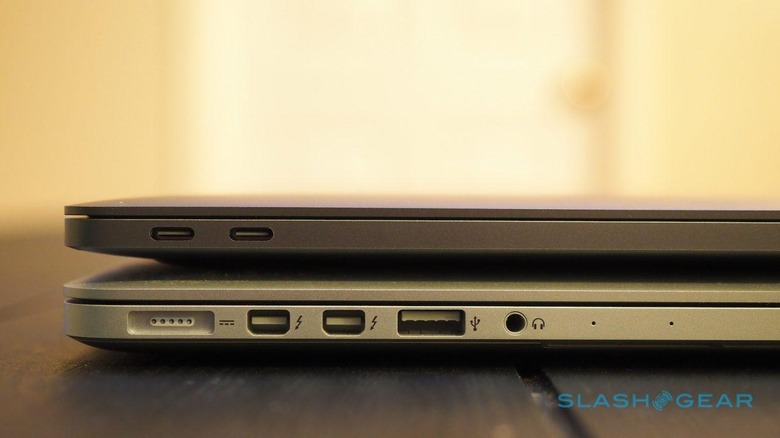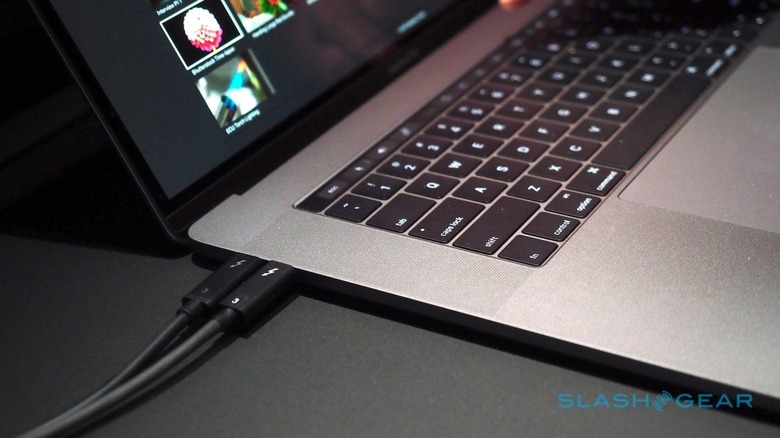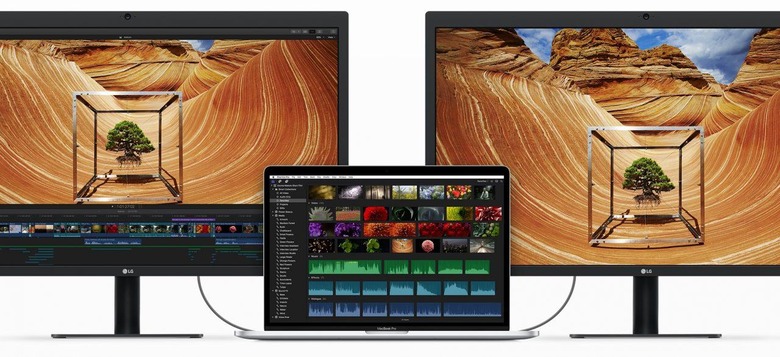A simple fix for the new MacBook Pro's big problem
Courage is a double-edged sword, and while consumers may have taken the death of the iPhone 7 headphone jack in their stride, professionals aren't being so generous with the new MacBook Pro. Apple's decision to ditch almost all the legacy ports on its flagship notebook was done in the name of ushering in widespread adoption of Thunderbolt 3 and enabling a thinner machine. However, while Thunderbolt 3 may undoubtedly be a better connector than the bevy of sockets along the edge of the old MacBook Pro, the Cupertino firm's decision to go slim has frustrated many who have legacy devices to plug in, and who were hoping for a more significant power upgrade.
Listen to that cohort, and Apple has clearly lost its way. The MacBook Pro was once "a truck" they point out, a powerhouse that made performance – CPU, GPU, and memory, for the most part – its lodestar and left the aesthetic to shape itself around that. Now, in an age of 4K video processing and virtual reality rendering, the new MacBook Pro has been distracted with Touch Bar fripperies and forgotten its true purpose.
Perhaps, though, the truck just needs an optional trailer.
In the interests of transparency, I should say I've been asking for something along these lines since 2013. Back then, I was hoping for an upgrade to the original Thunderbolt Display, which even then was already a couple of years old. With the state of hardware at the time, I was envisaging a combination monitor, external drive, port hub, and graphics chip all hooked up over a Thunderbolt 2 cable – perfect for the Mac Pro which had just launched.

Apple never bothered updating the Thunderbolt Display and, earlier this year, axed it from the line-up altogether. Indeed, the latest suggestions are that the company has exited the standalone monitor space altogether, preferring to leave the segment to third-party manufacturers like LG. In fact, an LG Thunderbolt 3 display got an on-stage mention at the event last week.
It's not such a bad idea. There's no denying that LG Display, the company's LCD arm, makes great panels: after all, Apple uses them on the iMac 5K. Monitor margins are traditionally low, though, so leaving third-party companies to fill the gap makes bottom-line sense for Apple too.
Problem is, while the LG UltraFine 5K Display – with its $1,299.95 price tag – has three USB-C downstream ports on the back, you're still going to need dongles if you want USB Type-A, ethernet, a memory card reader, or other "legacy" connections. That's still not ideal. So, if Apple isn't going to replace the Thunderbolt Display, what could it have in mind?
Making predictions like that is always fraught, but one straightforward fix would be a docking station. I'm thinking something roughly the size of a Mac Mini, connecting to your MacBook Pro with a single Thunderbolt 3 cable, and acting as a supercharged desktop hub. That would have the benefit of not only taking advantage of Thunderbolt 3 but exemplifying what makes it special in the interconnect space.

More ports, and a broader range of ports, would be table stakes of course. The current Mac Mini has gigabit ethernet, HDMI, two Thunderbolt 2, four USB 3, an SDXC card slot, and audio in/out. Apple would only need to switch Thunderbolt 2 for 3 to bring it up to speed, though a second display output – since you can drive two 4K panels from a single Thunderbolt 3 connection – would be nice as well.
Onboard storage would, I suspect, be optional. Some people will be content with the high-speed SSD inside their shiny new MacBook Pro, or satisfied with a more mainstream external HDD for periodic backups. However, Apple's markup on storage upgrades are notorious, and could be a neat little cash-cow for a Thunderbolt 3 dock.
What could really set such a hub aside, though, is an external GPU. Much has been made of Apple's decision to use Radeon Pro 400 Series chips in the new 15-inch MacBook Pro; after all, there's already faster silicon in AMD's lineup. The argument is that it's a performance/power/size matter: try to squeeze in anything more potent and you can no longer make the ten hour battery life promise, or slim the chassis down to 15.5 mm thick.
I'm not going to add to the argument about whether that's a trade off decision the professional audience traditionally drawn to the MacBook Pro would have made, but I do think Apple could pitch an external GPU dock as an answer. By offloading graphics processing to meatier silicon in an external box with no real ambitions of portability, Apple wouldn't have to think about power consumption, heat, or size. Indeed, it could eschew mobile GPUs altogether and drop in desktop-class graphics if it wanted.
It's questionable how many power-users need the most potent graphics processing while on the move. Many of those voicing concerns about the Radeon Pro 400 Series I've seen have pitched their MacBook Pro as more like an all-in-one desktop that can be transported, rather than a machine they take from coffee shop to coffee shop, hot-desking while rendering VR in 4K. Their argument is that they use their notebook plugged in and so power consumption isn't an issue.

Delivering the sort of graphics performance which will satisfy that crowd is a lot easier in an external form-factor. It also allows Apple to continue to pitch the 15-inch MacBook Pro as a mobile workhorse with lengthy battery life, in addition to offering 13-inch MacBook Pro owners a GPU option beyond the Intel Iris 540/550 graphics the smaller model tops out at. Clearly, there are some users who don't want a full 15-inch notebook in their backpack, but who wouldn't argue with an extra slice of GPU ability at times too.
Best of all – from Apple's perspective, at least – it would be another income stream. The Thunderbolt Display cost $999; a Thunderbolt 3 dock with an onboard GPU could, theoretically, cost significantly more depending on the graphics chip included. Certainly there'd be complaints from some, but when you're faced with spending $200 to switch the Radeon Pro 450 2GB to its 460/4GB sibling in the 15-inch notebook, splashing out on a potentially far more potent GPU in a hub with port flexibility and perhaps onboard storage might be easier to swallow, especially if it can be shared between two or more computers.
NOW READ: New MacBook Pro hands-on
Would such a distribution of power be accepted by the pro users traditionally most vocal in their praise of Apple's hardware? It's hard to imagine how the company could satisfy its own goals of thinner devices, maintaining battery longevity, and pushing wholeheartedly for new connectors, while simultaneously giving professionals the notebook they want, all in a single form-factor. Not without some vast improvement in battery technology, at least.
Arguably, splitting the hardware up makes a lot of sense, given the sort of work many MacBook Pro owners are doing. For those with a focus on 4K design – whether 2D or 3D – a large external display seems an inevitability. Why not split out the graphics processing too?
